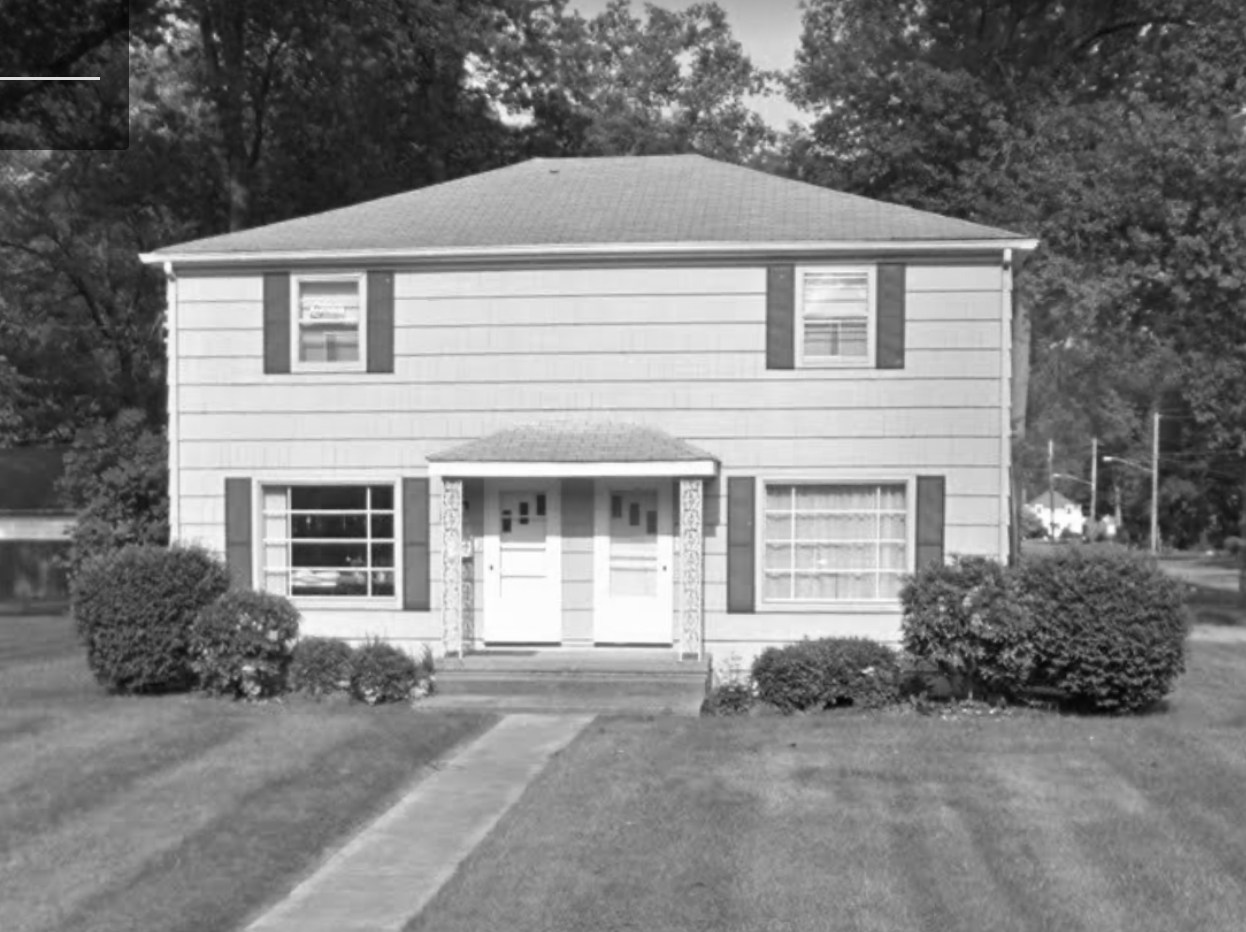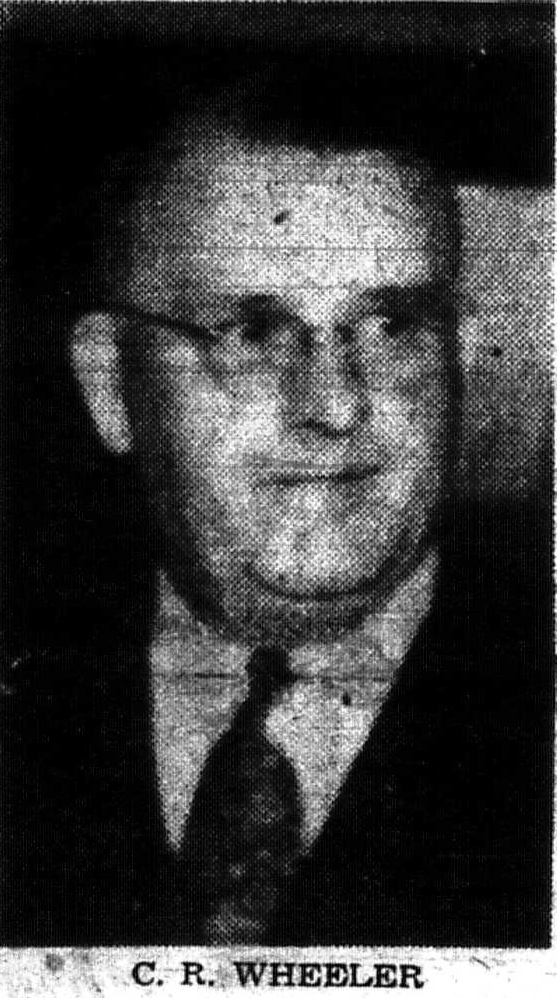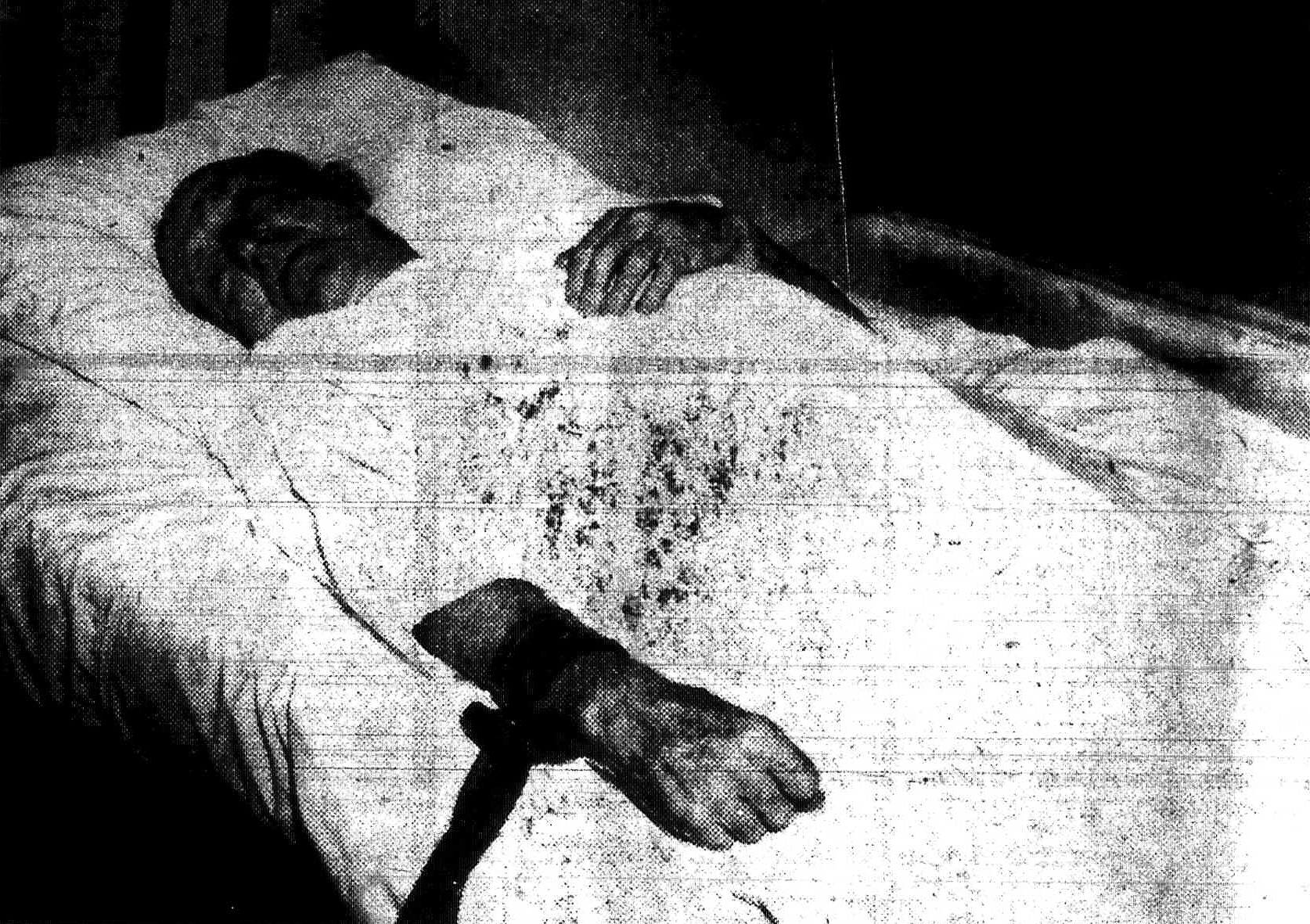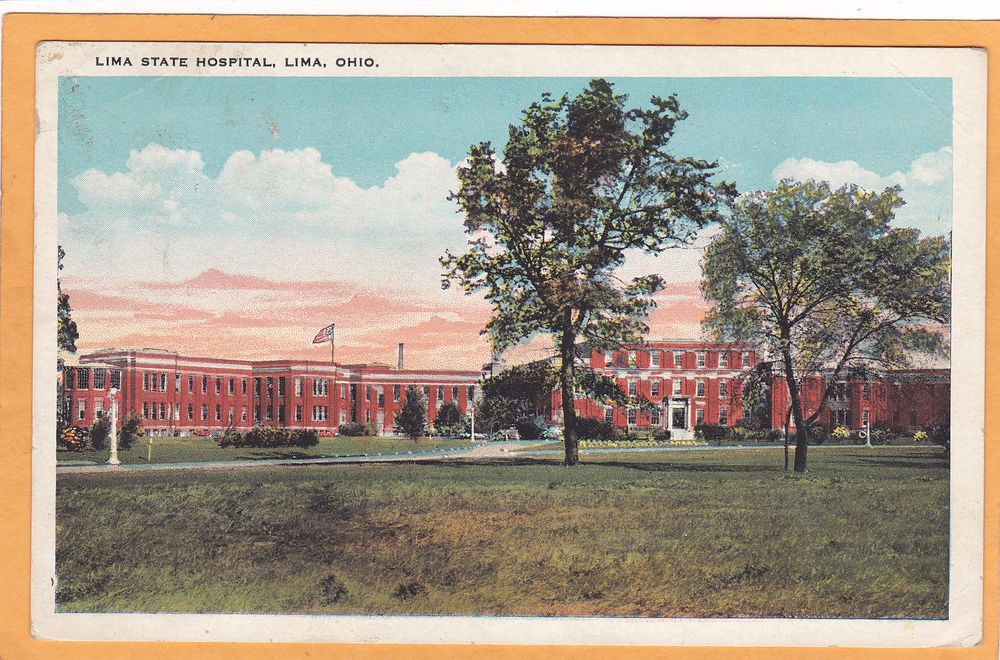History & Hauntings
in Northern Appalachia and the Western Reserve
Warren, Trumbull County, Ohio
July 4, 1945
On Independence Day of 1945, Americans remained in the clutches of the miseries brought by war. Victory Day had arrived on May 8, 1945, marking Germany’s surrender during World War II. However, fighting continued for another three months. Enlisted men now fought battles in the Far East and Pacific. In the US, strikes and labor disputes disrupted rubber production at Goodyear, impeding tire shipments required for planes and army vehicles. A sugar shortage was projected for the next couple years as continued war rationing sapped supplies.
Despite all of this, on July 4th, people in Trumbull County, Ohio were ready to celebrate. A crowd of 15,000 swarmed Waddell Park in Niles, Ohio to view horse shows, dance to the orchestra, swim, and view a firework display. But for the Wheeler family of Warren, the holiday turned to horror before lunchtime.

The Wheeler residence on Genesee,
built in 1939
The day began as usual for fifty-four year old Clifford Wheeler, an executive for the Republic Steel Corporation. He awoke at 8:45 a.m. in the Genesee Avenue home he shared with his wife, Lydia, and his father, George. After making himself ready, he went downstairs and chatted with his father in the basement recreation room. He then traveled to the Warren plant to observe operations and spent a short time checking in.

Clifford Wheeler
At 9:45 a.m., he returned home and when he walked in the door, his father asked, “What did you come back for?”
“This is a holiday, Dad, don’t you know?” Clifford responded.
Not only was the date Independence day, but it was George’s 79th birthday.
A few minutes later, George began to grumble over some missing money. “I have lost a five dollar bill out of my pocket,” George said. “Someone must have taken it.”
Hearing this, Clifford’s wife, Lydia, came downstairs and asked George where he thought he could have lost it.
“It probably dropped out of his pocket down in the recreation room,” Clifford suggested. “I’ll take a look after a while.”
George did not appreciate the aloof response. He walked up to his son yielding a revolver that he promptly aimed at his son’s stomach. Before Clifford had time to react, his father pulled the trigger and with a deafening bang, a bullet pierced his insides. Clifford stumbled into the dining room, clutching his wound, before he collapsed face-first onto the floor.
As Lydia ran to her husband, George stood over Clifford and fired a second bullet into his back. Lydia fell to her husband’s side but soon found herself staring down the barrel of the revolver. George pointed it as if preparing to shoot. She leapt to her feet and ran upstairs, though stopped short of hiding in a bedroom when she realized George was not following her. Instead, she heard his footsteps plodding down the basement steps to the recreation room. His voice muttered nonsensical words.
Lydia bolted down the stairs and locked the basement door. She picked up the telephone and first called Dr. Tyler, then her neighbors, G.W. Lea and Roy S. Hardman, the latter a law enforcement officer. During these hasty moments she heard two shots ring out in the basement.
When help arrived on the scene, Dr. Tyler confirmed that Clifford was deceased. Backup officers and an ambulance arrived.
At that time, Officers Myers and Stassin had to see what condition they would find George Wheeler. Lydia stated he had surely shot himself but could not be sure if he remained alive. However, when they opened the basement door ever so slowly, George stood at the base of the stairs pointing the revolver straight at them. Blood spilled from two flesh wounds, one in his neck and another on the left side of his stomach.
“Don’t come down,” he warned. “I’ll shoot anybody and right now.”
Now in a standoff, officers attempted to coerce George into dropping the gun. He refused. After the police suggested throwing a canister of tear gas down the stairs, George caved. He laid the gun on the floor where one of the officers quickly snatched it away. It was a .38 special revolver. Officers took hold of the elderly man and led him upstairs. He was treated at Warren City Hospital under the guard of policemen.

George Wheeler strapped to his hospital bed
At the hospital, George’s $5 bill, the one he had been looking for when he began his tirade, was found in his vest pocket. When questioned by investigators, George confessed the revolver had belonged to his son and he had found it in a bedroom cabinet.
Dr’s J.J. Tyler and Henry J. Meister made the determination that George was mentally ill and must be institutionalized. He was arraigned on July 16th before Municipal Judge Ralph R. Speak for first degree murder charges. George W. Buchwalter and Joseph Andrews served as his defense counsel. He pleaded not guilty by reason of insanity. That same day, George was transported to Massillon State Hospital by the order of Judge Lynn B. Griffith, acting on the behalf of Judge Sydney W. Jones.
Family History
Clifford Rinehart Wheeler was born on September 24, 1889 in New Philadelphia, Ohio. He married Lydia Elva Huff—who was seven years his senior—on November 9, 1912 in St. Clairsville and had no children. He worked as an operating assistant to F.E. Flynn, Republic Steel Corporation Manager for 17 years. Prior to that, he worked at the Wheeling Steel Corps in Steubenville. Those closest to him called him by the nickname of “Bob”.
His father, George James Wheeler, was born in either Ireland or England (sources vary) on July 4, c. 1866. He married Elizabeth Taylor on October 17, 1889. Besides Clifford, they had another son, George Wheeler, Jr. The couple was last noted as living in Uniontown in Belmont County in the 1940 census with George working as a foreman in a coal mine. Elizabeth died in Fairpoint, Belmont County, Ohio on July 26, 1941 at the age of 72. George became incredibly depressed. He lived alone for a short time until his St. Clairsville home caught on fire. George jumped from the second story of the home and suffered unspecified injuries. He immediately moved to Trumbull County into his son’s home.
Over the next three years, George exhibited no behavior suggesting he suffered from dementia. Lydia claimed that during the three years since her father-in-law moved in with her and Clifford, George remained amiable. It was only three days prior to the shooting that he began to behave out of the ordinary, acting moody, sensitive, and starting quarrels over trifles.
Aftermath
Clifford’s funeral was held at McFarland Funeral Home. He was buried in Longview Cemetery in New Athens.
George Wheeler was placed in the Lima Hospital for the Criminally Insane in Bath, Allen County, Ohio. The Lima State Hospital had first opened on July 10, 1915. It served to care for Ohio's criminally insane and later became infamous for its horrific conditions and poor treatment of patients by staff members. In 1971, a group of patients formed a class-action lawsuit against the facility. 31 employees were arraigned at court, accused of abuse, some having beat patients daily. Conditions improved following that, though in 1982 it was converted to a prison and ultimately closed in 2004. Only one section remains open as a correctional facility.

Postcard of Lima State Hospital
The prison became notorious for its numerous hauntings reported by staff and inmates alike. Disembodied moans echoed through the halls at night, screams erupted from the second floor, doors opened and closed themselves, and people were touched by unseen hands. Full bodied apparitions, one a figure dressed in black moving through walls and another, a female attendant who attempted to deliver meals to inmates after supper, appeared multiple times.
George Wheeler almost certainly died at Lima Hospital, though records as to when are sealed. He is also more than likely buried at the hospital’s cemetery.
References:
- Elizabeth Wheeler Death Record: "Ohio, County Death Records, 1840-2001," database with images, FamilySearch (https://familysearch.org/ark:/61903/1:1:F6C7-8HG : 1 March 2021), George J. Wheeler in entry for Elizabeth Taylor Wheeler, 26 Jul 1941; citing Death, Fairpoint, Wheeling Township, Belmont, Ohio, United States, source ID 13, County courthouses, Ohio; FHL microfilm 2,115,304.
- “15,000 at Waddell for July 4 Celebration” Niles Daily Times, July 5, 1945, Page 1
- “Father Kills C.R. Wheeler, Tries Suicide”, Niles Daily Times, Thursday, July 5th, 1945, Page 1
- “C.R. Wheeler, Republic Steel Plant Aid, Slain by Father at Home Here”, Warren Tribune Chronicle, July 5, 1945 Page 1, Column 1
- “Wheeler Is Charged In Son’s Death”, Warren Tribune Chronicle, July 5, 1945, Page 1, Column 3
- “Father Slays Ex-Local Man”, The Daily Times (New Philadelphia, Ohio), July 5, 1945, Page 1
- C.R. Wheeler Funeral, Warren Tribune Chronicle, July 7, 1945, Page 7, Column 2
- “Wheeler Sent to Massillon”, Warren Tribune Chronicle, July 16, 1945, Page 1, Column 3
- “Son’s Slayer Ruled Insane”, The Daily Times (New Philadelphia, Ohio), Tuesday, July 17, 1945, Page 3
- George Wheeler Sentence, Warren Tribune Chronicle, October 4, 1945 Page 1, Column 1
- “31 Ex‐Employees at Ohio Hospital Appear in Court” The New York Times, November 27, 1971, Page 24
- Lima Correctional Facility, “Haunted Toledo” Facebook page
- https://m.facebook.com/HauntedToledo/photos/lima-correctional-institutelima-ohioi-first-read-about-the-lima-correctional-ins/1248300785237236/